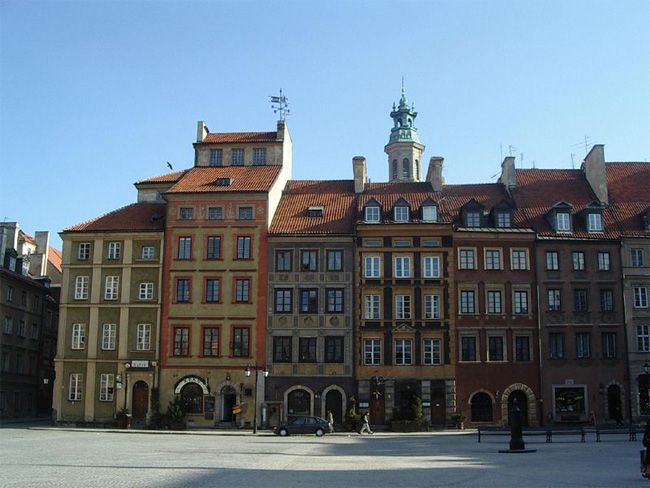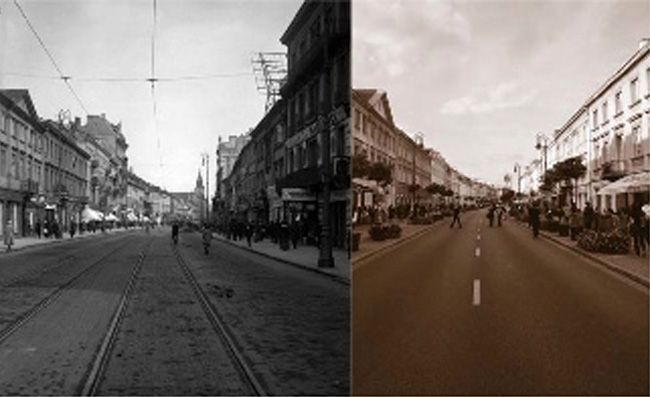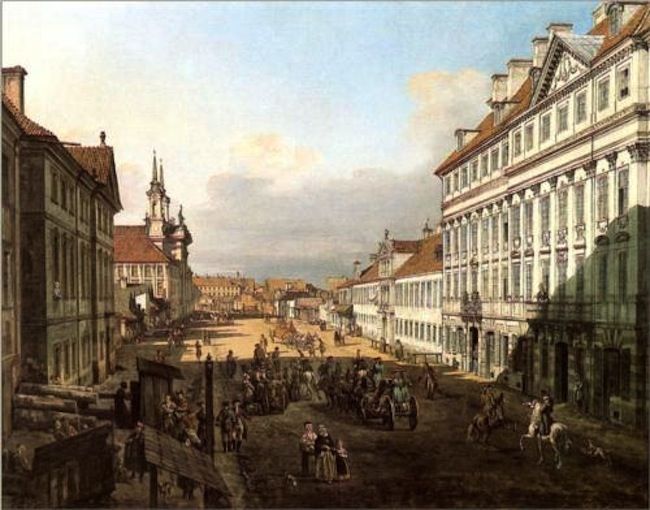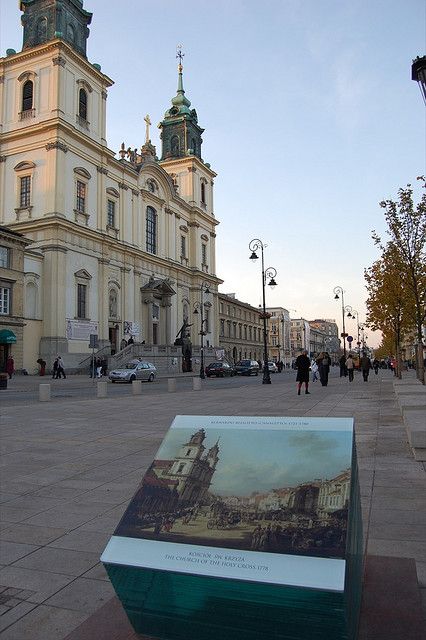Playlist: O'Dark 30 episode 184 (4-28)
Compiled By: KUT

KUT's O’Dark 30 is into it's final month and it still features the very best from the world of independent radio that we can find here on PRX and elsewhere. Sunday nights at 10 on Austin's KUT 90.5. Join us for 3 hours of a bit of everything from the big wide world of independent radio production.
Episode 184 (4-28) includes KUT's Views and Brews Remix: Smart Thinking 2...Lean & Hungry Theater Presents: A Midsummer Night's Dream...99% Invisible #72- New Old Town...KUT's Liner Notes: Cab Calloway...Clever Apes: Seeking the grail...The Animal Orchestra Is Quieting...Dear Z...Talking Top Ramen
Lean & Hungry Theater Presents: A Midsummer Night's Dream
From Lean & Hungry Theater | 57:49
A radio drama adaptation of Shakespeare's "A Midsummer Night's Dream," set in the Prohibition Era, with live sound effects and some of the finest Shakespearean actors in Washington, DC. Modern-language narration provides recaps of the original text throughout the show.
A live-to-air broadcast of "A Midsummer Night's Dream" was aired originally by Washington, DC's WAMU June, 2011.
 Lean & Hungry Theater, DC’s only radio drama company, and Washington DC’s NPR affiliate WAMU-88.5, present this special live-to-air broadcast of Shakespeare’s classic comedy “A Midsummer Night’s Dream.”
Lean & Hungry Theater, DC’s only radio drama company, and Washington DC’s NPR affiliate WAMU-88.5, present this special live-to-air broadcast of Shakespeare’s classic comedy “A Midsummer Night’s Dream.”
The one-hour production was broadcast live from the Woods-Brown Amphitheatre on the grounds of American University in June, 2011.
The cast of “A Midsummer Night’s Dream” includes artists who have appeared with or taught at The Folger Theatre, The Shakespeare Theatre, The Baltimore Shakespeare Festival, The Chesapeake Shakespeare Company, The Washington Shakespeare Company, Studio Theatre, and other local and national companies.
Set in the Prohibition Era, Lean & Hungry’s “A Midsummer Night’s Dream” recasts Shakespeare’s classic characters as gangsters and molls, with most of the action taking place in and around the Palace Hotel. The story of bewitched young lovers, vengeful gods and slapstick workers creates a world of magic and transformation – with a hilarious “play-within-a-play” climax.
“The story of ‘A Midsummer Night’s Dream’ is a staple of English and Theatre education, and part of the required reading list for many public schools,” explained Jessica Hansen, Lean & Hungry’s Artistic Director. “We welcome public radio’s listening families to join us for a mix of classic theatre and classic radio they can’t find anywhere else.”“By placing our production in a more contemporary setting with modern-day sound effects, we’re offering an easy-to-understand perspective for today’s young audiences,” Hansen added. “Modern-language narration provides an ongoing recap of the original text throughout the show. It’s a great way to introduce new audiences to this wonderful play.”
Lean & Hungry Theater is the only company in the Washington, DC metropolitan area dedicated to adapting works of Shakespeare and other classic playwrights for radio broadcast.
The productions and recordings of Lean & Hungry Theater productions are endorsed by the Columbia Lighthouse for the Blind.
99% Invisible #72- New Old Town
From Roman Mars | Part of the 99% Invisible (Director's Cut) series | 17:59
The recreation of a town that never was.
- Playing
- 99% Invisible #72- New Old Town
- From
- Roman Mars

Like many cities in Central Europe, Warsaw is made up largely of grey, ugly, communist block-style architecture. Except for one part: The Old Town.

(Credit: Andy Wright)
Walking through the historic district, it’s just like any other quaint European city. There are tourist shops, horse-drawn carriage rides, church spires. The buildings are beautiful—but they are not original.

During World War II, German forces razed more than 80% of Warsaw. After Soviet troops took over, much of the city was rebuilt in the with communist style: fast, cheap, and big. They built apartment blocks, wide avenues, and heavy grey buildings. It was communist ideology in architectural form.
But when it came to the historic district of Warsaw—the Old Town and a long connecting section called the Royal Route—they decided not just to rebuilt, but to restore. Builders would use the same stones, and use special kilns to make special bricks to preserve its authenticity. After six years of reconstruction, the new Old Town was opened. Poles were ecstatic to have it back. Even in the West, it was seen as a triumph of the human spirit.
But here’s the thing: Warsaw’s historic Old Town is not a replica of the original. It’s a re-imagining. An historic city that never really was.
Look closely.

(From left: Warsaw’s Old Town Square in 1913; in 1945; and in 2009)
Not long after the Old Town was rebuilt, people started to notice that it was a little bit off. People wandered around and feeling this uncanny disjuncture between the city that they remembered and the city in which they now found themselves.

(From left: Nowy Swiat (“New World”) Street, c. 1915-1918; in 2009)
Despite the push for authenticity, it turned out that the major inspiration for the rebuilding of the city were the paintings of an 18th Century Italian artist named Bernardo Bellotto. Bellotto was a “vedutista,” one who specialized in the Venetian style of painting in which cityscapes are depicted realistically, with their details and documented precisely.

(“Dluga Street,” Bernardo Bellotto, 1778.)
But Bellotto had a tendency to make “improvements” on the cities he painted, relying as much on his artistic license as what he actually observed. The paintings from the 18th Century were never meant to match reality—they were supposed to be better than reality.

(From left: John’s House on Castle Square in the 1920s; John’s House as depicted by Bellotto, c. 1768; John’s House After the 1948 reconstruction.)
For the Soviets, this reconfiguration of the Old Town served two purposes. FIrst, they wanted to send the message that the Old Town—and Warsaw as a whole—would be better than it was before the war. Second, they didn’t want Poles to long for this lost part of the city. By recreating Old Town, the past could stop being such a distraction, and they could get to work on a drastic overhaul of the country.

(Credit: Emily Heath)
Today, placards with Bellotto’s paintings stand beside buildings, inviting passers-by to marvel at their likeness.
Our story this week was reported by Amy Drozdowska and Dave McGuire, who spoke with Warsaw-born anthropologist Micha? Murawski about Warsaw’s complicated history.
Cab Calloway
From KUT | Part of the KUTX Liner Notes series | 03:02
Singer, dancer, and bandleader, Cab Calloway is often referred to as the “hi- di -hi- di-ho” man. His nonsensical sounds and improvised melodies made him one of the fathers of “scat.” Join Rabbi Neil, as he opens the curtains and shines the spotlight on the life and music of a musician who taught us the limitless possibilities of performing.
- Playing
- Cab Calloway
- From
- KUT
 He was also a commercial success as a performer on stage and in film. In the 1979 movie “The Blues Brothers”, he adorned his trademark white tie and tails, to perform “Minnie the Moocher. ” In a time where certain guidelines were expected from musicians, Calloway stood alone with his eccentric stage performances and ostentatious wardrobe.
He was also a commercial success as a performer on stage and in film. In the 1979 movie “The Blues Brothers”, he adorned his trademark white tie and tails, to perform “Minnie the Moocher. ” In a time where certain guidelines were expected from musicians, Calloway stood alone with his eccentric stage performances and ostentatious wardrobe.
Clever Apes: Seeking the grail
From WBEZ | Part of the WBEZ's Clever Apes series | 08:40
There are certain questions that get scientists really excited – discoveries that are big, tantalizing, and often, far out of reach. Even if they’re never found, these holy grails can set the agenda and reveal a lot about how science works. Gabriel Spitzer looks at two examples in this installment of WBEZ’s science experiment, Clever Apes.
- Playing
- Clever Apes: Seeking the grail
- From
- WBEZ
Scientists love a quest, and so does the media. Just about every field has some “holy grail” or other. A database search for just the last six months shows about a thousand instances of this phrase popping up in relation to science. They refer to: stem cells, a zebrafish gene switch, a pregnant sturgeon, vegetation structure data, a fabricated brain, variable valve timing in combustion engines, tolerance-immune drugs, lab chimps and a recipe for royal jelly. Among many, many others. Remember the good old days, back in ancient Rome, when there was just one grail to worry about? It's become enough of a cliché, in fact, that the prestigious journal Nature has supposedly banned its use (though see the royal jelly link above to disprove that one). But the idea of the holy grail still can provide a little window into how science works. On this week's Clever Apes, we consider two cases that have something to teach us about the way cutting-edge science gets done. The first example may qualify as a quest worthy of Quixote: cold fusion. This is energy produced by nuclear fusion, achieved not in a bomb or a stellar furnace, but at room temperatures. There are some pretty rigid laws of nature that make this particular grail seem unattainable. But it sure is tantalizing: cheap, clean, abundant energy from something like saltwater. Cold fusion captured the nation's attention in 1989, when two chemists, Martin Fleischmann and Stanley Pons, shocked the world by announcing that they'd found it. Obviously that didn't really work out, but the story of the men behind that spectacle is a fascinating one, told in a forthcoming documentary film called “The Believers.” The title fits well with the religious metaphor of the holy grail, and suggests a revealing paradox about faith and science. Incidentally, the 137 Films gang's last movie, “The Atom Smashers,” was about another holy grail of physics: the search for the Higgs Boson, or God Particle. That one is still very much at the forefront, and new rumors about its supposed discovery continue to pop up regularly.
The Animal Orchestra Is Quieting
From Bishop Sand | Part of the Sound series | 11:11
Animals communicate with each other like instruments in an orchestra. This natural soundscape is now quieting which can have an effect on humans as well.
- Playing
- The Animal Orchestra Is Quieting
- From
- Bishop Sand
 Bernie Krause is a musician who has drastically shifted his career to study natural soundscapes. He's discovered information hidden in these natural sounds that are telling for animals and us.
Bernie Krause is a musician who has drastically shifted his career to study natural soundscapes. He's discovered information hidden in these natural sounds that are telling for animals and us.
Voices:
Bernie Krause - soundscape researcher, musician, author
Jack McElaney - teacher and dean at Dwight School in NYC
PRX homepage image from Shutterstock.
Dear Z
From Third Coast International Audio Festival | 09:57
A love letter to a super-horse.
- Playing
- Dear Z
- From
- Third Coast International Audio Festival
 By way of audio love letter, Julie Shapiro recounts the incredible racing history of the charismatic, record-breaking mare named Zenyatta, who captured the hearts and imaginations of millions and shined a bright spotlight on the American horse racing industry in 2009-10.
By way of audio love letter, Julie Shapiro recounts the incredible racing history of the charismatic, record-breaking mare named Zenyatta, who captured the hearts and imaginations of millions and shined a bright spotlight on the American horse racing industry in 2009-10.
(PRX homepage image from Shutterstock)
Talking Top Ramen
From University of Montana Journalism | 01:24
THE food for college gets the voxpop treatment from producer Mike Powell.
- Playing
- Talking Top Ramen
- From
- University of Montana Journalism
